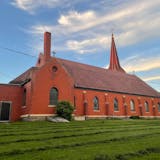The White Bear Lake City Council soon will consider the fate of a 193-unit apartment complex on about 5 acres, a project that is taller and has more units than the city code allows.
But city planners say the project meets a local housing need, so it's worth exempting the developer from a few city restrictions.
White Bear Lake is among a growing number of suburbs that are working around longtime development restrictions to transform oddly shaped or blighted lots into new apartments, homes and businesses.
Increasingly, suburban officials are relying on these projects to rejuvenate stagnant corners of their communities and draw new residents of varying ages and incomes.
"Suburban zoning codes are often not keeping up with the changing market and consumer expectations," said Anne Kane, White Bear Lake's director of community development.
White Bear Lake is relying on a mechanism called a planned-unit development (PUD), which allows developers to break from city code on building height and unit numbers in exchange for giving city leaders a say in expansive, multimillion-dollar projects.
The trade-off is clear: Developers get a more lucrative project, and the city welcomes new residents, businesses and tax revenue.
Some residents say the partnership that forms between city planners and developers means the public is largely cut out of the process.


